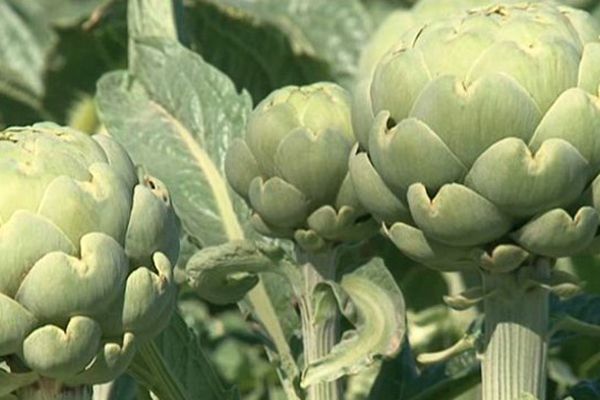The artichoke, the green gold of Roussillon

A favorite terroir
Its production area is located in the Roussillon plain and the Têt valley in the Pyrénées-Orientales. These lands, known for their deep, draining sand-like soils, and ideal climatic conditions (mild, sunny) ensure that this vegetable develops early, allowing it to reach the stalls first.
50: the number of municipalities in the Pyrénées-Orientales producing Roussillon PGI artichokes.
The origins
A cousin of the cardoon, the artichoke – the cardofa, in Catalan – was introduced in Spain and Italy (via Sicily) by the Arabs. He arrived in France between the 15th and 16th centuries. It is said that Queen Catherine de Médicis was so fond of it that she could eat it until she was indigestible. In Roussillon, the land where new crops are grown thanks to an ancient market garden tradition, the love story for the plant dates back to the 18th century, during which it became the province’s main production.
One PGI for five varieties
Green or purple with tight central bracts (leaves), the artichoke of Roussillon is known for its taste qualities. Since 2015, it has been protected by a Geographical Indication. It is made up of five varieties: the whitewashed or Macau (the most cultivated), the Calico, the Pop-Vert, the Salambo and the Violet VP 45. Harvested by hand in the spring, it only blooms once, except for the small purple, which gives a second rise in the autumn.
Catalans’ favorite
Characterized by its small size, the VP 45 violet occupies a prominent place in Catalan gastronomy: it is eaten in salads, with a barigoule (cooked with mushrooms, bacon, carrots and white wine), in doughnuts, stuffed, or as a garnish.
The artichokes by Christophe Comes
Christophe Comes, a chef in Perpignan, grows his own kitchen garden for La Galinette, an award-winning restaurant with a Michelin star. For artichokes, he buys from a vegetable grower in Salanque. Little violet is one of her favorite vegetables, closely linked to her childhood memories. “It is more beautiful, more poetic, a real pink button,” says the chef, who hails from the region. On the menu, it is served raw or cooked, sliced with dried pork liver and a drizzle of olive oil, as a farigoule or stuffed with lobster.












